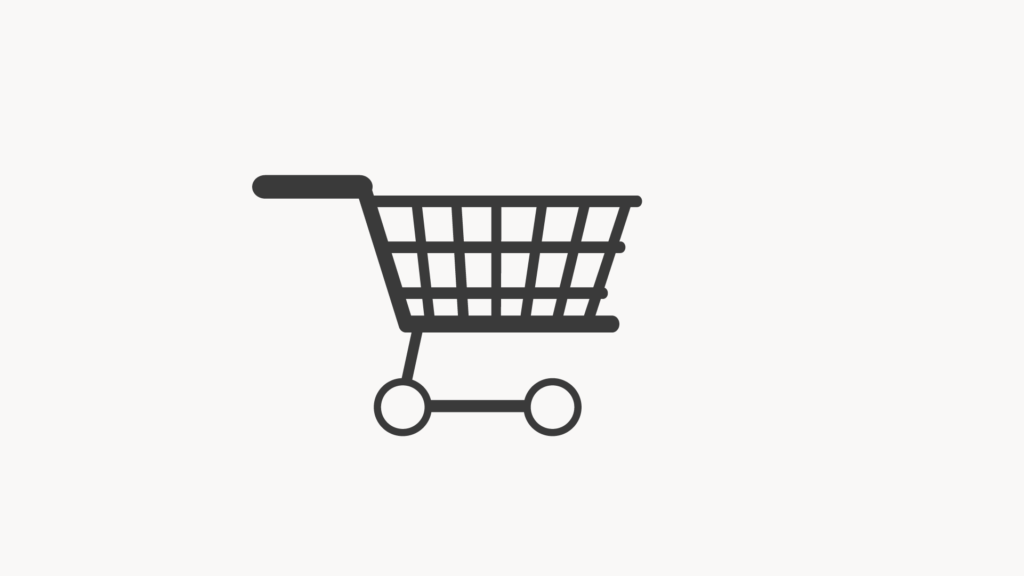|
Getting your Trinity Audio player ready...
|
Fintech is a relatively new industry within financial services, but it has already seen enormous growth over the past few years. There are many business facts and fintech statistics to grasp, notably how large and influential this industry will be in the future.
While fintech doesn’t get as much attention in the media as it does, say, the mobile payments industry, fintech is a huge force that is poised to disrupt the financial services sector. The retail banking industry is already seeing some shakeups and that’s only expected to increase.
Fintech businesses are one of the fastest-growing sectors today and forecasting their performances can provide valuable insights for traditional players, managers, and investors alike.
Table of Contents
Fintech
The term FinTech means Financial Technology. It is a term used to describe the collective use of computer software and modern tech to offer consumers automated, assisted, and improved financial services.
What Is Fintech?
The term FinTech means Financial Technology. It is a term used to describe the collective use of computer software and modern tech to offer consumers automated, assisted, and improved financial services.
If you’ve ever set up a digital wallet on your phone, you’ve experienced a type of fintech.
What are the different types of fintech products and services?
Mobile wallets and payments are the two areas that have been the most affected by fintech. Here are examples of fintech services:
- Personal finance
- Payments and billing
- Lending (especially peer-to-peer)
- Insuretech (insurance technology)
- Money transfer and remittance
- Blockchain
- Capital markets (stock trading and others)
- Wealth management
- Mortgage and real estate
- Regtech (regulatory technology)
Fintech is not limited to an industry or trend. This is mostly what makes fintech so exciting going forward, and why companies are rushing to out-compete one another.

Fintech Industry Statistics to Know
1. The transaction value for the Global Digital Payments Market is projected to be worth USD 11.29 trillion by 2026.

The global digital payments market is on an upward trajectory. There are many market disruptors on every continent and a new one seems to be springing up every day. People are creating new ways to trade and transfer funds.
The transaction value for the Global Digital Payments Market was USD 5.44 trillion in 2020, and it is projected to be worth USD 11.29 trillion by 2026, registering a CAGR of 11.21% between 2021 and 2026.
The COVID-19 pandemic highlighted many things that need to be improved in every economy. It also showed the importance of e-commerce as a solution. Companies that used e-commerce in their businesses during the global lockdown stood out and succeeded in most cases. This experience is expected to extensively accelerate the growth of digital payment methods across the world.
Even before the pandemic, cashless payments had a high demand which was driven by convenience, positive government policies, and evolving consumer behavior. Some of the things that are an incentive for governments to adopt Fintech, are the benefits of reduced currency printing costs and countering the fake currency influx that disturbs the economic growth. Digitized currency makes it better to track and trace transactions.
2. The global fintech market is projected to reach $305.7 billion by 2023.

The number of people using mobile devices is on the rise. As more people use their mobile devices, mobile applications, and other tech solutions for financial purposes, the demand for innovative banking solutions rises.
New fintech companies are budding up all over the place to meet the rising demand, and establish dominance in a new world.
The projected growth of the fintech industry from $11.8 billion in 2018 to about $306 billion in 2023 is attributed to a desire to capture market share. The projection of the fintech industry growth is estimated at a compounded annual growth rate of 22.17%.
3. 96% of consumers across the globe are aware of at least 1 alternative fintech company or service.

The fintech industry is becoming less obscure, these days it’s at the forefront of the minds of consumers and corporates alike. It seems like consumers are positive about the services.
About 96% of consumers are aware of at least one fintech firm. Added to that, 64% of global consumers have used one or more of these fintech platforms. This is a giant leap compared to the 2017 figure of 33% and the 2015 adoption of fintech services figure of 16%.
4. Fintech has a market share of slightly over 1% of the global financial industry.

According to CB Insights for their Global Fintech Report, the global financial sector will be worth $26.5 trillion in 2022, at a compounded annual growth rate of 6%.
To put it in context, the fintech industry market share in 2019 was worth about $187 billion. Which was still just over 1% of the global financial industry.
Register your business.
5. Robo-advisors are expected to manage $2.8 trillion in assets by 2023.

According to Statista, the future of robot advisory is upon us. In 2021, assets under management in the Robo-advisor segment were about $1.42 trillion.
The average amount of assets under management by robo-advisors (per user) is estimated to be around $4,873 in 2021. The United States is a leader in the use of robo-advisors.
In 2022, the assets under management in the robo-Advisors segment are projected to reach US$1.78tn.
By 2025, the forecast points to this figure growing at an annual growth rate of 18.83% and reaching $2.84 trillion. Also by 2025, the number of users is projected to be about 478.8 thousand.
Furthermore, by 2026, the assets under robo-advisor management are expected to show an annual growth rate (CAGR 2022-2026) of 15.15%. This result in a projected value of US$3.14tn by 2026. The number of users is also estimated to jump to 506.276m users by 2026.
6. AI is expected to power 95% of all customer interactions in the next decade.

According to Gartner research, AI will remain one of the top workloads driving infrastructure decisions through 2023 and beyond.
The future of technology will bring exceptionally superior banking-related chatbots. In other industries like marketing, chatbots are already in full swing to improve the customer experience.
An interesting prediction was made in 2019 about chatbots, that customer-bot interaction will grow by 3,150% between 2019 and 2023. It seems like the prediction has come true.
Companies are placing increasing importance on observing valuable insights from every touch-point with their consumers. Frankly, chatbots are getting better by the day, and soon we may not even be able to differentiate them from human services.
7. More than 100 million people used proximity mobile payments in 2021.

The 2020 pandemic brought a significant shift in the way payments are being processed worldwide. Due to the health advice to reduce physical contact, more retailers implemented contactless payment options.
Emarketer predicted that by 2022, 33.3% of mobile phone users, 38.6% of internet users, and 46.8% of smartphone users will use proximity mobile payments.
Latin American countries seem to be growing the fastest, and Argentina is in the lead with a 58.3% growth reported in 2020.
China is at the forefront in terms of user share with 87.3% of mobile phone users, for people aged 14 and older using proximity mobile pay.
According to eMarketer, in-store mobile payments are on a 29% year-over-year growth path. By 2025, proximity mobile payments will have over 1.49 billion users worldwide, translating to 48.2% of smartphone users. Also, digital e-wallets are expected to make up nearly a third of all point-of-sale payments in 2022.
What’s Driving Fintech Development?
8. Retail payments are a huge driver and account for 25% of the fintech market.

According to Mckinsey, trends show that people are paying companies digitally at a growing rate. Digital payments to Apple were processed by about 44 million users as of March 2021. Currently, expectations for Apple are that there will be over 58 million payees by 2025.
Other enterprises in different industries are seeing significant growth as well. For example, Starbucks processes digital payments for about 31.2 million users, Google Pay for 25 million users, and Samsung Pay serves 16.3 million users. The numbers are set to grow in the future.
9. At a compounding annual growth rate of 10-12%, E-commerce is one of the biggest growth drivers of fintech.

Ecommerce is on the tongue of every marketing and sales executive, and this has also been accelerated by the 2020 Covid-19 pandemic. Fintech is a catalyst of e-commerce, so it should come as no surprise that as Ecommerce grows so will fintech.
Fintech and e-commerce go hand in hand, because of benefits like credit card fraud detection. AI quality is improving and excellent at spotting the difference between ‘real’ data vs. ‘hacked’ data.
10. By the year 2035, AI is expected to increase labor productivity by up to 40%.

Accenture points out, that the advancement of AI technology is so fast that it’s hard to keep up with its growth.
The popularity of AI is growing among companies, and being adopted in day-to-day operations. Ai is estimated to increase a company’s profitability by 39% across all industries and economies by 2035.
This estimated value will possibly increase profits by a staggering $14 trillion in the world economy
.
11. About 60% of users will make a mobile payment with their smartphone.

The year 2020 saw 9-out-of-10 smartphone users making a mobile payment. In the same year, the global mobile-payment market reached a value of more than 1 trillion dollars.
Fast forward to early 2022, mobile transactions are estimated to grow by 28%. This fintech statistic is acceptable, considering that 60% of consumers seek to transact with their financial firms through a single platform such as a mobile app, according to Ernst & Young.
12. By 2023, app store consumer spending is projected to increase by 92% to $157 billion worldwide.

The spending per device in 2017 was $20.94 and in 2020 the figure is estimated to jump 22.5% to $25.65. Interestingly by 2022, almost 80% of millennials in the US are expected to become digital banking users.
Given the existing app installs and a blend of a fast-growing user base, app stores are expected to reach $157 billion in consumer spending by 2022.
It is worth mentioning, that the Japanese annual per device spend is anticipated to exceed $140 by 2022. Japan brought us Nintendo and PlayStation among other things, so it is not supervising that Japan’s per annum spending will be six times the global average.
13. The use of cash at all points of sales has dropped by 42% since 2019.

Digital payment adoption is surging, with the legacy method of payments such as cash and physical credit card swipes taking a backseat to digital wallets. The imagined digital future is slowly becoming real.
Fintech future trends are challenging the need for cash as well. Consumers are beginning to look for convenience when checkout, with a 42% reduction in usage since 2019.
What Does the Banking Sector Think of Fintech?
14. 88% of legacy banking companies fear they’ll lose revenue to fintech firms.

Fintech has the bulk of banks, insurers, and investment managers concerned that they’ll lose revenue if they don’t adapt to the innovative services being provided by fintech.
Those who were surveyed by PWC believe that up to 25% of revenue is at risk. This figure is lower than the 2016 survey, which reported that the respondents who saw fintech as a threat believed 83% of revenue was at risk.
15. Goldman Sachs estimated fintech to disrupt $4.7 trillion in revenue.

As far as 2009, Goldman decided to be at the forefront of the fintech future, by strengthening its investments in fintech startups. Similar to JP Morgan Chase, Goldman has warned about the coming disruption by the new tech-enabled or fintech players.
Within fintech specifically, Goldman has focused on two areas in fintech, payments and big data. Goldman has also invested in the digital currency space, leading the way for big bank investments into crypto.
16. 82% of traditional financial companies plan to increase fintech partnerships in the next 3 to 5 years.

Global banks, investment managers, and insurers plan to partner up with fintech in the future. About 60% of credit unions and nearly 50% of banks in America believe belief that these partnerships are critical.
However, 50% of fintech executives say they are struggling to find the right bank or partner for them to disrupt consumer banking. This problem may be due to the slow nature of legacy institutions.
Estimations show that about 20% of legacy banking firms have the potential to find a mutually beneficial way to work with fintech companies. On the other hand, the biggest concern for established companies is still IT and cyber security.
17. 63% of insurance company CEOs believe IoT will be strategically important to their business.

The Internet of Things (IoT) are devices that self-report in real-time. This includes things like activity trackers like Fitbits, home security, AR glasses, voice assistants like Alexa and Siri, smart cars like Tesla, smart appliances, etc.
It is expected that IoT will play a significant role in the way businesses collect and analyze customer data. Information is gold and shrewd businesses will capitalize on this opportunity to drive growth and innovation.
18. 44% of TMT and 37% of FS organizations have incorporated emerging technologies into the products and services they sell.

TMT (Technology, Media and Telecommunications) and FS (Financial Services) companies used to be different, but technological advancements have brought them so close together they are almost identical.
TMT companies are applying for FS licenses, and similarly, FS companies are branding themselves as tech companies. The catalyst for this change is Fintech.
Both FS and TMT are incorporating fintech into their products and services. The end goal is to improve operational efficiency, which will reduce costs, improve the customer experience, and attract effective growth.
How much is being invested into Fintech?
19. Top 10 global Fintech deals for 2021
Email marketing is enjoying a revival with a healthy return on investment. Not only is email marketing fairly easy for business owners to do, but it’s one of the most affordable tools. Email marketing on average generates $36 for every $1 spent.
Company
Deal Value
Region
Sector
Refinitiv
$14.8 billion
London, UK
Institutional/B2B
Nets
$9.2 billion
Ballerup, Denmark
Payments
Adenza
$3.75 billion
San Francisco, US
Institutional/B2B
Robinhood
$3.4 billion
Menlo Park, USA
Wealth Management
Verafin
$2.75 billion
St. John’s, Canada
Institutional/B2B
Paidy
$2.7 billion
Tokyo, Japan
Lending
Itiviti
$2.6 billion
Stockholm, Sweden
Institutional/B2B
Divvy
$2.5 billion
Draper, USA
Payments
SoFi
$2.4 billion
San Francisco, USA
Lending
Tink
$2.2 billion
Stockholm, Sweden
Banking
20. VC investment globally reached a record $115 billion in 2021.

VC investment globally reached a record $115 billion in 2021, surpassing the previous high of $53.2 billion set in 2018. Corporate VC-related investment accounted for $50 billion of this total, which is more than double the $24 billion seen in 2020
21. Blockbuster year for crypto and blockchain, with $30 billion in investment globally.

Investment in the crypto and blockchain space grew to a new high in 2021, rising from $5.4 billion in 2020 to over $30 billion. Globally, there was an incredible increase in the level of recognition for the potential role of crypto and its underlying technologies in modern financial systems.
Increasing activity in the space has captured the attention of central banks. Some are thinking of following the China route of developing their digital currencies.
22. 2021 was a record year for fintech investment in Africa, US $1.6bn invested across 153 deals.

After a brief fintech investment dip in Africa due to the COVID-19 pandemic in 2020, the deals came back to make 2021 a record year.
KPMG Research shows that there was over US $1.6bn invested across 153 deals. This is double the value of 2020 ($800m).
The key markets remain Nigeria in the West, Kenya in the East, and South Africa. The Nigeria deals in the first quarter of 2021 alone eclipsed the total for the whole of 2020. This is remarkable because raising such a quantum of finance from foreign sources is unprecedented.
Which Countries Are Leading the Way in Fintech?
23. Americas attracts $105 billion in fintech investment, a record $65 billion from VC.
Fintech investment in the Americas was robust in 2021, with a record 2,660 deals accounting for $105 billion in investment. After shattering the previous record of $25 billion (2020) at mid-year, VC investment climbed further to reach $65 billion for 2021.
PE investment in fintech also reached a high of$5.8 billion —well above the previous record of $1.5 billion set in 2019. Despite M&A value dropping year-over-year, the record number of M&A deals highlights the incredible interest in fintech.
24. EMEA sees a record $77 billion in fintech investment in 2021.
In 2021, investment in fintech companies in Europe, the Middle East, and Africa (EMEA) reported a record $77.4B with 1,859 deals. Fintech investment in the EMEA region in 2021 was driven in part by significant merger and acquisitions (M&A) activity.
25. In 2021, fintech companies in the Asia Pacific received $27.5B with 1,165deals.
Fintech investment in the Asia-Pacific region reached $27.5 billion in 2021 across a record 1,165 deals. While total investment was below 2019’s peak, it was almost twice the $14.7 billion seen in 2020.
26. 20 Largest Fintech Ecosystems in the World.
According to the Global Fintech Index Country Rankings 2021, the top 20 fintech countries are:
1. The United States
2. The United Kingdom
3. Israel
4. Singapore
5. Switzerland
6. Australia
7. Sweden
8. The Netherlands
9. Germany
10. Lithuania
11. Estonia
12. Canada
13. Finland
14. Brazil
15. China
16. Spain
17. Uruguay
18. Ireland
19. Russia
20. Denmark

27. 8 of the top 10 biggest fintech deals in 2020 were US-based companies
As of the first half of 2021, this top ten dominance by the US seems to have been slightly decreased. Five of the top ten global fintech deals were done by companies based in the US for H1 2021. With Robinhood leading the way, and others like Divvy and SoFi in the mix as well.
What are some of the biggest Fintech companies?
28. Who are the major players in Fintech? (20 Biggest Fintech Companies)
As of the first half of 2021, this top ten dominance by the US seems to have been slightly decreased. Five of the top ten global fintech deals were done by companies based in the US for H1 2021. With Robinhood leading the way, and others like Divvy and SoFi in the mix as well.
(Source: CFTE, valuations fluctuate with time, as of June 2022)
| Company | Deal Value | Region |
Visa
$443 billion
USA
Mastercard
$348 billion
USA
Ant Financial
$170 billion
China
Tencent (Fintech area)
$163 billion
China
Intuit
$119 billion
USA
Paypal
$98 billion
USA
Stripe
$95 billion
USA
Fiserv
$65 billion
USA
Square
$52 billion
USA
Adyen
$46 billion
Netherlands
Klarna
$45 billion
Sweden
29. There are more than 10,000 fintech startups in the Americas.
As of November 2021, there were 10,755 fintech startups in the Americas, making it the region with the most fintech startups globally. In comparison, there were 9,323 such startups in the EMEA region (Europe, the Middle East, and Africa) and 6,268 in the Asia Pacific region.
Fintech Industry Future
30. By 2024, blockchain tech is set to hit $67 billion by 2026.
The fintech-oriented industry is expected to soar to nearly $20 billion by 2024.
The Blockchain Market size was valued at $4.9 billion in 2021 and is projected to reach USD 67.4 billion by 2026, at a Compound Annual Growth Rate (CAGR) of 68.4% during the forecast period.
The main contributors to the high growth rate of the blockchain market include increasing venture capital funding and investment in blockchain technology; extensive use of blockchain solutions in banking and cybersecurity; high adoption of blockchain solutions for payment, smart contracts, and digital identities; and rising government initiatives to implement it.
31. Peer-to-peer digital lending is expected to rise to $912.43 billion by 2028.
The P2P lending market is projected to grow exponentially and reach nearly $1 trillion, by 2028. In 2018, the peer-to-peer market was worth $43.16 billion, so the projected 2028 figure is a big leap. So the expected CAGR (compounding annual growth rate) is 26.6%.
Peer to Peer (P2P) lending market is driven by low market risk, affordable operating costs, and increasing implementation of online apps. The Asia Pacific region is expected to dominate this market with a 40% share by 2026. The Americas are anticipated to be second with a 28% market share.
32. By 2023, blockchain will support the global movement and tracking of $2 trillion in goods and services annually.
Gartner forecasts that the business value generated by blockchain will grow rapidly, reaching $176 billion by 2025 and $3.1 trillion by 2030.
Sources
Hashtagincome, CB insights, Statista, Gartner, Mckinsey, KPMG
Do you need help with registering your next business in Botswana? We provide secretarial solutions to help your business grow and succeed. Contact or email us.







